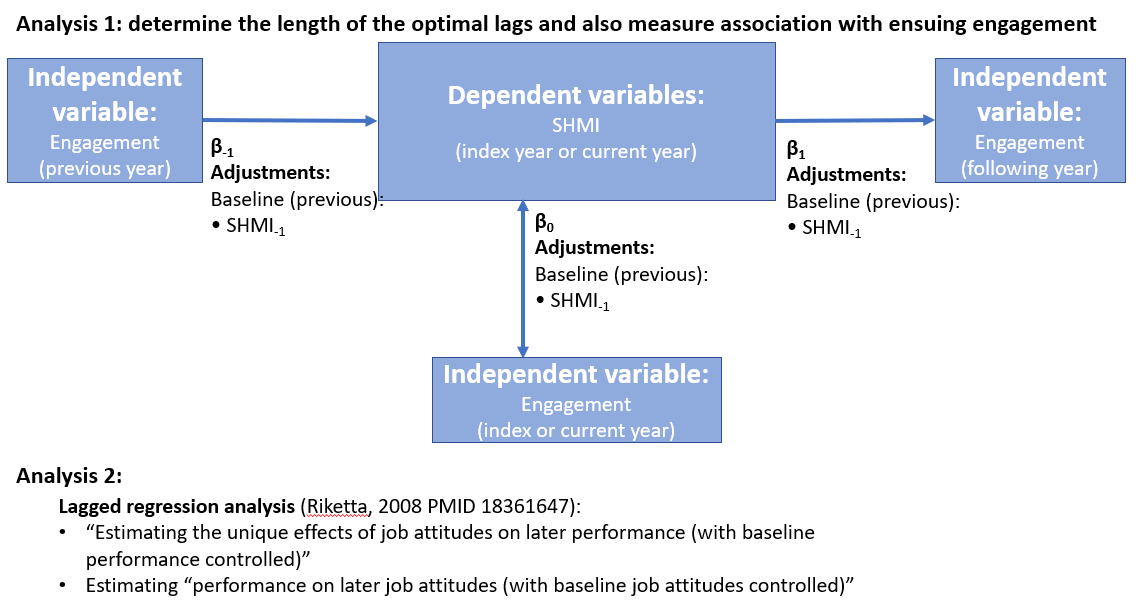Results
- Abstract at Open Science Foundation. DOI 10.17605/OSF.IO/QX5C2
Local copies and derivatives of source files
Source files at NHS websites
Public reporting
Analytic plan
Original plan

Revised plan
After reading the Halo Effect (Rosenzweig, 2006) in May 2019, which cited longitudginal panel studies of Schneider (Schneider, 2003) and Huselid (Huselid, 1997) which led to more recent panel studies with a cross-lagged analysis (Riketta, 2008); the analytic design was switch to a cross-lagged regression.